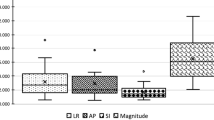Abstract
Aim
External beam radiation therapy attempts to deliver a high dose of ionizing radiation to destroy cancerous tissue, while sparing healthy tissues and organs at risk (OAR). Recent advances in intensity modulated radiotherapy treatment call for a greater understanding of uncertainties in the treatment process and more rigorous protocols leading to greater precision in treatment delivery. The degree to which this can be achieved depends largely on the cancer site. The treatment of organs comprises soft tissue (e.g. in the abdomen) and those subject to rhythmic movements (e.g. lungs) causing inter and intra-fraction motion artifacts that are particularly problematic. Various methods have been developed to tackle the problems caused by organ motion during radiotherapy treatment, e.g. Real-time position management respiratory gating (Varian) and synchronized moving aperture radiation therapy, developed by researchers at Harvard Medical School.
Objective
The majority of the work focuses on tracking the position of the pathologic region, with the intra-fraction shape variation of the region being largely ignored.
Materials and Methods
This paper proposes a novel method that addresses both the position and shape variation caused by the intra-fraction movement.
Conclusion
We believe this approach is able to reduce the clinical target volume margin, hence, sparing yet more of the surrounding healthy tissues from radiation exposure and limiting irradiation of OAR.
Similar content being viewed by others
References
Stanford Cancer Centre, Stanford Hospital & Clinics, Respiratory Gating, http://cancer.stanfordhospital.com/forPatients/services/radiationTherapy/respiratoryGating/default
Varian Medical Systems, Radiation Therapy, Treatment Delivery, RPM Respiratory Gating. http://www.varian.com/orad/prd057.html
Jaffray DA, Siewerdsen JH, Wong JW and Martinez AA (2002). Flat-panel cone-beam computed tomography for image-guided radiation therapy. Int J Rad Onc Biol Phys 53(5): 1337–1349
Jaffray DA and Siewerdsen JH (2000). Cone-beam computed tomography with a flat-panel imager: Initial Performance Characterization. Med Phys 27(6): 1311–1323
Siewerdsen JH and Jaffray DA (2000). Optimization of X-ray imaging geometry (with specific application to flat-panel cone-beam computed tomography). Med Phys 27(8): 1903–1914
Siewerdsen JH and Jaffray DA (1999). Cone-beam computed tomography with a flat-panel imager: effects of image lag. Med Phys 26(12): 2635–2647
ELEKTA, Image Guided Radiation Therapy, Elekta Synergy®. http://www.elekta.com/healthcareus.nsf
Varian Medical Systems, Radiation Therapy, Dynamic Targeting IGRT, Dynamic Targeting Image-guided Radiation Therapy (IGRT), Image-Guided Motion Management: a portal to expanding IMRT applications. http://www.varian.com/orad/prd119.html
Khamene A, Bloch P, Wein W, Svatos M, Sauer F (2006) Automatic registration of portal images and volumetric CT for patient positioning in radiotherapy. Med Image Anal 10:96–112, received 23 February 2004; received in revised form 12 August 2004; accepted 10 June 2005; Available online 8 September 2005
Neicu T, Shirato H, Seppenwoolde Y and Jiang SB (2003). Synchronized moving aperture radiation therapy (SMART): average tumour trajectory for lung patients. Phys Med Biol 48: 587–598
Jiang SB, Pope C, Al Jarrah KM, Kung JH, Bortfeld T and Chen GTY (2003). An experimental investigation on intra-fractional organ motion effects in lung IMRT treatment. Phys Med Biol 48: 1773–1784
Sharp GC, Jiang SB, Shimizu S and Shirato H (2004). Prediction of respiratory tumour motion for real-time image-guided radiotherapy. Phys Med Biol 49: 425–440
Berbeco RI, Jiang SB, Sharp GC, Chen GTY, Mostafavi H and Shirato H (2004). Integrated radiotherapy imaging system (iris): design considerations of tumour tracking with linac gantry-mounted diagnostic X-ray systems with flat-panel detectors. Phys Med Biol 49: 243–255
TracKnife, TrackLeaf, TrackBeam, TracX, InitiaRT, a division of Initia Medical Technologies. http://www.tracknife.com/
Siemens Introduces ARTÍSTE, an integrated dose-guided radiation therapy solution. http://www.medical.siemens.com/webapp/wcs/stores/servlet/PressReleaseView?langId=-1&storeId=10001&catalogId=-1&catTree=100005,13839&pageId=53023
Fisher B (1999) 2-D Deformable template models: a review, http://homepages.inf.ed.ac.uk/rbf/CVonline/LOCAL_COPIES/ZHONG1/node1.html
Cootes TF, Taylor CJ, Cooper DH and Graham J (1995). Active shape models—their training and application. Comput Vis Image Underst 61: 38–59
Cootes TF, Edwards GJ and Taylor CJ (2001). Active appearance models. IEEE PAMI 23(6): 681–685
Cootes TF, Taylor CJ, Constrained active appearance models. In: Proc ICCV 2001, vol I, pp 748–754
Cootes TF, Hill A, Taylor CJ and Haslam J (1994). The use of active shape models for locating structures in medical images. Image Vis Comput 12(6): 355–366
Cootes TF, Taylor CJ (2001) Statistical models of appearance for medical image analysis and computer vision. Proc SPIE Med Imaging
Cootes TF, Kittipanya-ngam P (2002) Comparing variations on the active appearance model algorithm. In: Proc BMVC vol 2, pp 837–846
Blake A and Isard M (1998). Active contours; the application of techniques from graphics, vision, control theory and statistics to visual tracking of shapes in motion. Springer, Heidelberg ISBN:3-540-76217-5
Derraz F, Belkaid AB, Beladgham M, Khelif M (2004) Application of active contour models in medical image segmentation. In: International conference on information technology: coding and computing (ITCC’04), vol 2, p 675
Cootes TF, Wheeler GV, Walker KN, Taylor CJ (2000) Coupled-view active appearance models. In: Proc British machine vision conference 2000, vol 1, pp 52–61
Lapeer RJ, Rowland RS, Chen MS (2004) PC-based volume rendering for medical visualisation and augmented reality based surgical navigation. In: Proceedings of the 8th international conference on information visualisation (IV04), July 14–16 2004. IEEE/Computer Society Press, London, ISBN 0-7695-2177-0
Rowland RS, 3D volume viewer. http://www.rmrsystems.co.uk/imaging.htm
MAESTRO project website for public. http://www.maestro-research.org/
Author information
Authors and Affiliations
Corresponding author
Rights and permissions
About this article
Cite this article
Su, Y., Fisher, M.H. & Rowland, R.S. Marker-less intra-fraction organ motion tracking using hybrid ASM. Int J CARS 2, 231–243 (2007). https://doi.org/10.1007/s11548-007-0133-1
Received:
Accepted:
Published:
Issue Date:
DOI: https://doi.org/10.1007/s11548-007-0133-1
Keywords
- Intensity modulated radiotherapy treatment (IMRT)
- Clinical target volume (CTV)
- Region of interests (ROI)
- Organs atrisk (OAR)
- Treatment planning system (TPS)
- Real-time position management (RPM)
- Image guided radiotherapy treatment (IGRT)
- Cone-beam imaging (CBI)
- Radiotherapy treatment planning (RTP)
- Digitally reconstructed radiograph (DRR)
- Synchronized movingaperture radiotherapy (SMART)
- Average tumor trajectory (ATT)
- Artificial neural network (ANN)
- Linear accelerator (Linac)
- Active shape model (ASM)
- Active appearance model (AAM)
- Active contour models (ACM)
- Electronic portal imaging devices (EPID)
- Hidden markov models (HMM)
- Beam’s eye view (BEV)
- Multi-leaf collimator (MLC)
- Principle component analysis (PCA)
- 4-dimensional CT (4DCT)




